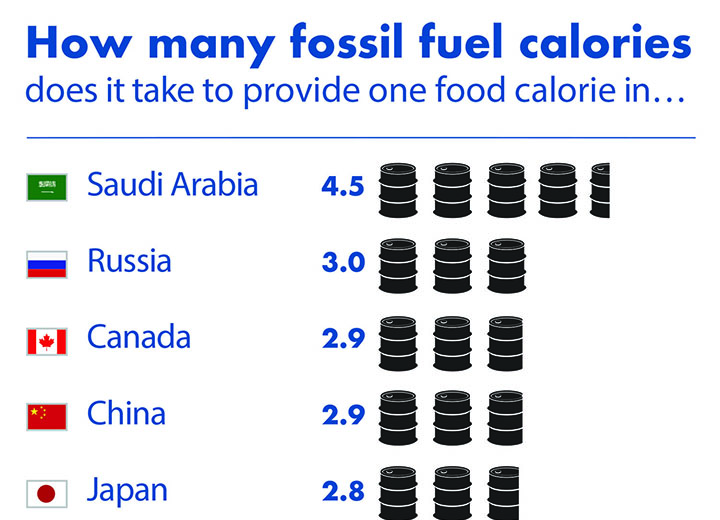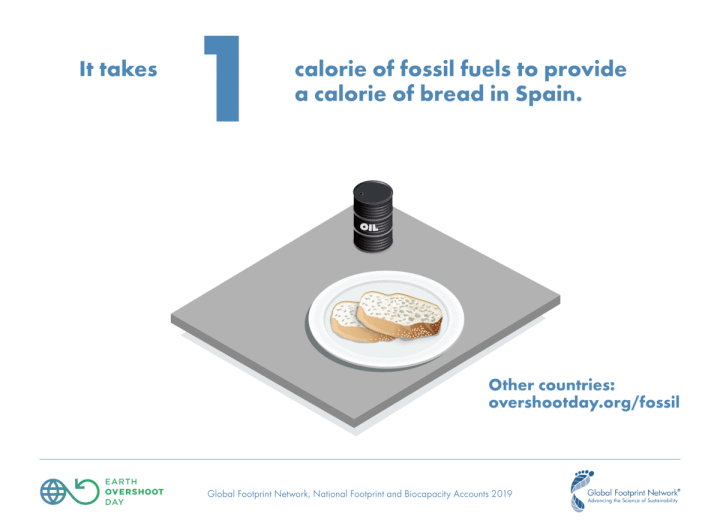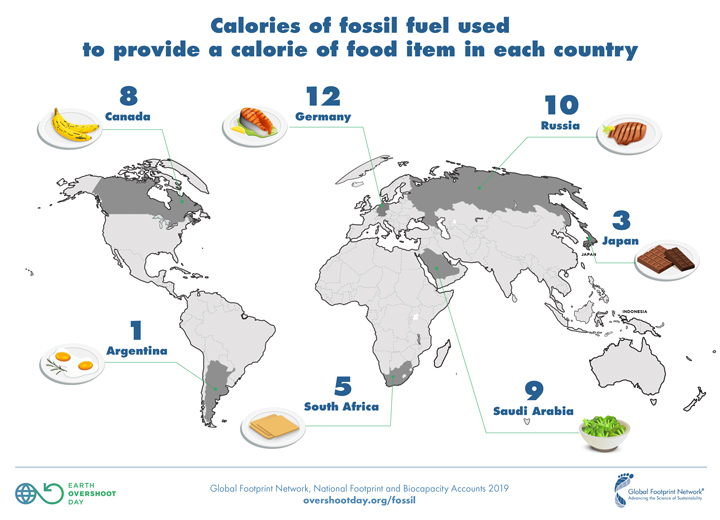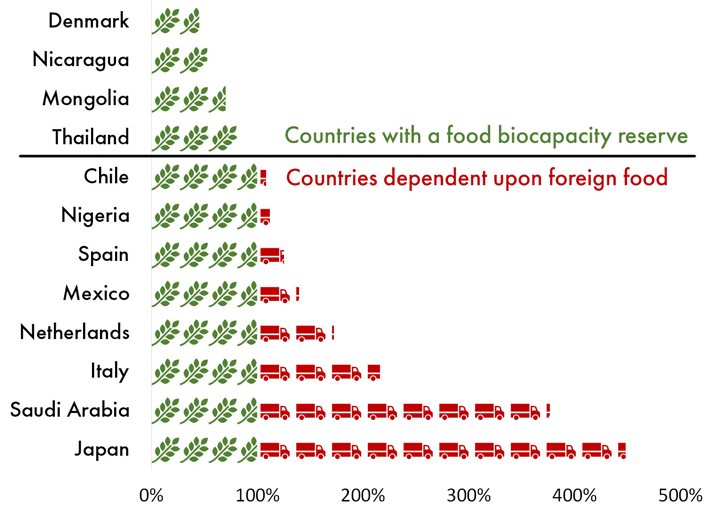Getting food onto your plate requires fossil fuel energy. But how much? The answer depends on where you live. Our food is heavily subsidized by fossil fuel, from fertilizer, irrigation pumping, tractors, processing, and transport. As a result, every calorie we eat has been enabled by a number of “calories of fossil fuel.” This includes production from farm to store, not the additional energy needed by the consumer to transport, refrigerate, store, and cook the food at home.




